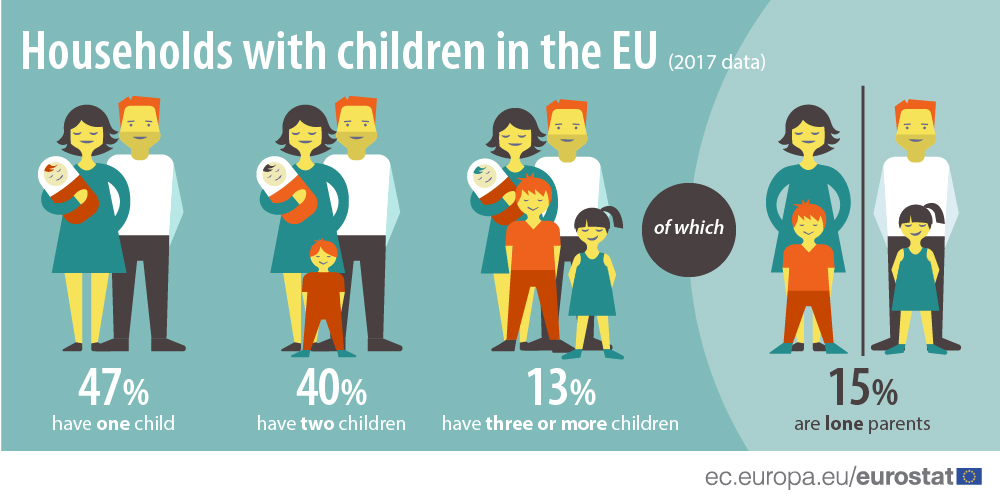On the occasion of the Global Parents Day, celebrated on 1 June, Eurostat publishes a selection of indicators on households with children in the EU.
In 2017, the European Union (EU) counted 220 million households, almost a third of which (65.4 million) had children.
Among the EU Member States, Ireland recorded the highest proportion of households with children (40%), ahead of Cyprus and Poland (both 37%), Slovakia (36%), Portugal and Romania (both 35%). In contrast, the lowest shares were registered in Germany and Finland (both 22%), followed by Bulgaria (25%), Austria (26%) and Sweden (27%).
Proportion of households with three or more highest in Ireland, lowest in Bulgaria
At EU level, almost half of all households with children (47%, or 31 million households) had only one child, while 40% (26 million) had two children, and 13% (8.5 million) three children or more.
The highest share of households with three or more children was registered in Ireland (26%), followed by Belgium and Finland (both 19%), France (18%) and the United Kingdom (17%). At the opposite end of the scale, less than 10% of households with children had at least three children in Bulgaria (5%), Portugal (6%), Spain and Italy (both 8%).
The source dataset is available here.
Highest proportion of single parent households in Denmark, lowest in Croatia
At EU level, 15% of households with children were made up of single parents with children.
With about 1 in every 3 households being a single parent household, Denmark (30%) recorded the highest proportion of single adult households with children, ahead of Lithuania (26%), Sweden (24%), the United Kingdom (22%), Estonia (21%) and Latvia (20%). In contrast, the lowest proportions of single adults with children were found in Croatia (6% of all households with dependent children), Romania (7%), Greece, Finland and Slovakia (all 8%).
Further information on this topic can be found in our Statistics Explained article.
For more information please contact us: estat-user-support@ec.europa.eu.


